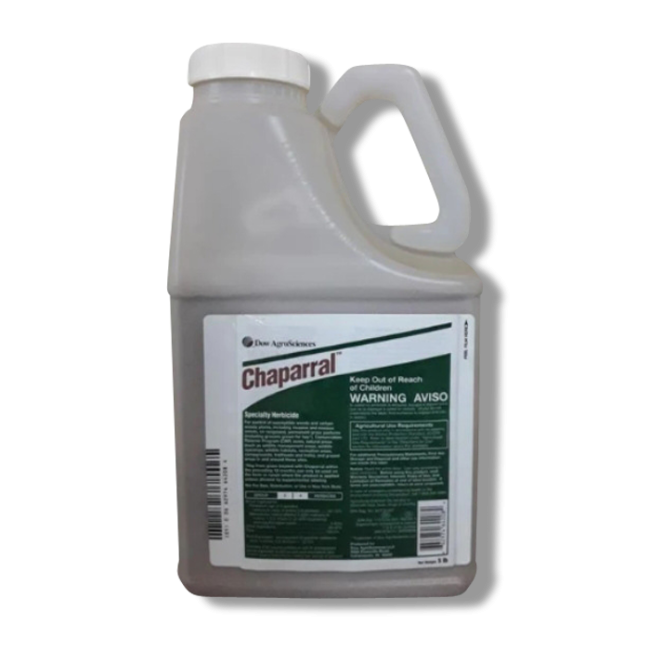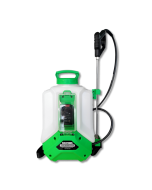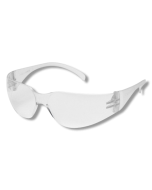Gain access to personalized product screening, the best pricing, rewards, and more!






application2
Chaparral Herbicide
Chaparral Herbicide is a reliable specialty herbicide for controlling a broad spectrum of difficult invasive broadleaf and woody weeds from rangelands and pastures. It is practical, easy-to-mix and does not require a license to apply.
11/04/25
Chaparral Herbicide, manufactured by DOW/CORTEVA, is a broad-spectrum herbicide for controlling broadleaf weeds and woody species in pastures and rangelands.
The active ingredients are aminopyralid and metsulfuron, meaning it has multiple action modes. This helps it control many different weeds that other herbicides fail to control.
Applying Chaparral Herbicide is also helpful for cattle. It provides more foraging land and promotes the growth of desired vegetation, keeping them grazing longer.
Tools Needed:
For small to medium applications, you can apply this product with a handheld pump sprayer, a backpack sprayer, or a hose-end sprayer.
Large-volume applications can be applied with a pesticide spray rig, a boom sprayer, or even an aerial application.
How to Use:
- Step 1: Determine how much Chaparral Herbicide to use by measuring the square footage of the treatment area. To do this, measure the length and width of the treatment area in feet, then multiply them together (length X width = square footage). For acreage, divide the square footage by one acre (square footage / 43,560 sq. ft. = acre). This is to help determine how much product should be mixed and used and at what dilution rate. Spot treatments of Chaparral may be applied at a rate of up to 2.5 oz. per acre for weeds and 3.3 oz. for brush per 100 gallons of water.
- Step 2: Fill your sprayer halfway with water, then measure and add the required amount of product. Thoroughly agitate the sprayer to dissolve the granules, then add the rest of the water. Agitate your sprayer again, and you're ready to apply.
- Step 3: Apply the product evenly over the desired area, avoiding overlap and reducing drift as much as possible.
- Step 4: Reapply as the label recommends, and be sure not to over-apply, as this could damage the plants. The max rate per year is no more than 3.3 oz./acre of Chaparral Herbicide per year.
Where to Use:
Chaparral Herbicide is intended for use on rangeland, permanent grass pastures (including grasses grown for hay), Conservation Reserve Program (CRP) acres, natural areas (such as wildlife management areas, wildlife openings, wildlife habitats, recreation areas, campgrounds, trailheads and trails), and grazed areas in and around these sites.
Do not apply this product on lawns, turf, ornamental plantings, urban walkways, driveways, tennis courts, golf courses, athletic fields, commercial sod operations, or other high-maintenance, fine turfgrass areas or similar areas.
When to Use:
Best applied on actively growing weeds from spring to early summer.
Do not apply this product to an entire farm or ranch in one year.
Do not rotate to any crop from rangeland, permanent pasture, or CRP acres within one year following treatment with this product. Cereals and corn can be planted one year after treatment. Most broadleaf crops are more sensitive and require at least 2 years, depending on the crop and environmental conditions.
Safety Information:
Chaparral Herbicide is safe to use around children and pets when applied according to the product label instructions. Always wear the proper personal protective equipment (PPE) when mixing and applying this product.
Keep people and pets out of treated areas until 48 hours have passed after application.
Special Considerations:
Read the label carefully before applying Chaparral to your property. When a rate range is given, use the higher rate to control weeds at advanced growth stages, under less-than-favorable growing conditions, or for more extended residual control. For best results in the product's good uptake and systemic movement, avoid mowing, haying, shredding, burning, or soil disturbance in treated areas for at least 14 days following application.
| Availability | Online |
| Restricted Use | No |
| Shipping Restrictions * = not registered** = restricted use | 1.25 Pound: CA*, DC*, HI*, NY*, VA*, VT** 5 Pound: CA*, DC*, HI*, NY*, VA*, VT** |
| Brand | CORTEVA |
| Keith's Pro Tips | "When using Chaparral on a particular grass for the first time, test out a small area first. Larger acreage may be treated if no injury occurs throughout the season." |
| Product Drawbacks | Chaparral applications can be greatly hindered by heavy rainfall as it may result in runoff or movement of the product. |
| Target Pests | Chaparral Range targets the following:Crops: Absinth Wormwood, American Plum, Annual Broomweed, Annual Lespedeza, Annual Marshelder, Annual Sowthistle, Arrowleaf Sida, Artichoke Thistle, Aster, Babysbreath, Bedstraw, Beggarticks, Bitter Sneezeweed, Bittercress, Black Henbane, Black Locust, Black Medic, Blackberry, Blackeyed-Susan, Bladder Campion, Blessed Milk Thistle, Blue Mustard, Brackenfern, Bristly Oxtongue, Broadleaf Plantain, Broom Snakeweed, Brown Knapweed, Buckbush, Buckhorn Plantain, Bull Thistle, Bur Buttercup, Burclover, Bushy Wallflower, Camelthorn, Camphorweed, Canada Thistle, Carolina False Dandelion, Carolina Geranium, Carolina Horsenettle, Chamomile, Cherokee Rose, Chicory, Cinquefoil, Cocklebur, Common Buedock, Common Cat's Ear, Common Chickweed, Common Crupina, Common Dandelion, Common Fiddleneck, Common Lambsquarters, Common Purslane, Common Ragweed, Common St. Johnswort, Common Sunflower, Common Tansy, Common Vetch, Common Yarrow, Conical Catchfly, Corn Cockle, Cowcockle, Crownvetch, Curlycup Gumweed, Cutleaf Evening Primrose, Dewberry, Diffuse Knapweed, Dock, Dryer's Woad, Garlic Mustard, Giant Hogweed, Goldenrod Spp., Hairy Fleabane, Halogeton, Harry Buttercup, Henbit, Hoary Alyssum, Honey Locust, Honeysuckle, Horsemint, Horseweed, Houndstongue, Italian Thistle, Jim Hill, Knapweed, Kochia, Kudzu, Lady's Thumb, Locoweed, Malta Starthistle, Mexicantea, Mimosa, Miner's Lettuce, Mullein, Multiflora Rose, Musk Thistle, Orange Hawkweed, Partridgepea, Pennsylvania Smartweed, Perennial Pepperweed, Perennial Sowthistle, Pigweeds, Plains Coreopsis, Plumeless Thistle, Poison Hemlock, Povertyweed, Prickly Lettuce, Prickly Sowthistle, Prostrate Knotweed, Purple Cudweed, Purple Loosestrife, Purple Starthistle, Red Sorrel, Redbud, Redstem Filaree, Rush Skeletonweed, Russian Knapweed, Russian Thistle, Sand Hill Plum, Scotch Thistle, Sentless Mayweed, Sericea Lespedeza, Shephardspurse, Sicklepod, Silky Crazyweed, Silverleaf Nightshade, Smallseed Falseflax, Snow-On-The-Mountain, Spanish Needles, Spiny Amaranth, Spotted Knapweed, Spotted Spurge, Stinking Mayweed, Swainson Pea, Sweet Clover, Tall Buttercup, Tall Ironweed, Tansy Ragwort, Teasel, Tree Of Heaven, Tropical Soda Apple, Tumble Mustard, Vervain, Waterpod, Western Ironweed, Western Ragweed, Western Salsify, White Clover, Whitetop, Wild Caraway, Wild Carrot, Wild Garlic, Wild Licorice, Wild Mustard, Wild Parsnip, Wild Prairie Rose, Wingstem Actinomeris, Wisteria, Woolly Croton, Woolly Distaff Thistle, Yankeeweed, Yellow Hawkweed, Yellow Starthistle, Yellow Woodsorrel, and Yucca. For more target pests please refer to the label. |
| Application Equipment | Backpack Sprayer, Spray Rig |
| Application Methods | Broadcast Spray, Spot Treatment |
| Active Ingredient | Potassium salt of 2-pyridine carboxylic acid, 4-amino-3,6-dichloro: 62.13% Metsulfuron methyl (Methyl 2-)(4-methoxy-6- methyl-1,3,5- triazin-2-yl)(amino]carbonyl)(amino]sulfonyl)(benzoate): 9.45% Other Ingredients : 28.42% |
| Product Type | Herbicide |
| Formulation | Water Dispersible Granule (WDG) |
| Application Rate | In general for spot treatments, mix 2.5 oz for weeds and 3.3 oz for brush of Chaparral per 100 gallons of water. For more specific application rates please refer to the label. |
| Shelf Life | Chaparral has a shelf life of 3 to 5 years when stored in a cool, dry place. |
| Yield | Chaparral Range provides a wide range of coverage. Please see label for coverage specifications. |
| Use Sites | Outdoors |
| Time to Kill | Chaparral is not an instant kill. It may take a few weeks for target plants to fully die from an application. In some cases, repeat applications are necessary for total control. |
| Comparable Products | Cimarron Plus Range and Pasture Herbicide |
| Use Caution With | St Augustine |
| EPA Registration # | 62719-597 |
| Restricted Use | No |
|---|---|
| Shipping Restrictions | CA, DC, HI, NY, VA |
| Availability | Online |
| Signal Word | WARNING |
| Keith's Pro Tip | "When using Chaparral on a particular grass for the first time, test out a small area first. Larger acreage may be treated if no injury occurs throughout the season." |
| Target Pests Multi | Absinth Wormwood, Annual Fleabane, Annual Lespedeza, Annual Marshelder, Annual Sowthistle, Arrowleaf Sida, Artichoke Thistle, Aster, Baby's Breath, Bedstraw, Beebalm, Beggarticks, Bitter Sneezeweed, Bittercress, Black Henbane, Black-eyed Susan, Bladder Campion, Blessed Milk Thistle, Blue Mustard, Bracken Fern, Bristly Oxtongue, Broadleaf Plantain, Broom Snakeweed, Brown Knapweed, Buckhorn Plantain, Bull Thistle, Bur Buttercup, Bur Clover, Bushy Wallflower, Camphorweed, Canada Thistle, Carolina False Dandelion, Carolina Geranium, Carolina Horsenettle, Chamomile, Cinquefoil, Cocklebur, Common Burdock, Common Catsear, Common Crupina, Common Dandelion, Common Fiddleneck, Common Lambsquarters, Common Purslane, Common Ragweed, Common Sunflower, Common Tansy, Common Vetch, Common Yarrow, Conical Catchfly, Corn Cockle, Cowcockle, Crown Vetch, Curlycup Gumweed, Cutleaf Evening Primrose, Dewberry, Diffuse Knapweed, Dock, Dyer’s Woad, Fireweed, Garlic Mustard, Giant Hogweed, Hairy Buttercup, Hairy Fleabane, Halogeton, Henbit, Hoary Alyssum, Hoary Cress, Honeysuckle, Horseweed/Marestail, Houndstongue, Italian Thistle, Knapweed, Kochia, Kudzu, Ladysthumb, Locoweed, Malta Star-Thistle, Mexicantea, Mimosa, Miners Lettuce, Mullein, Multiflora Rose, Musk Thistle, Orange Hawkweed, Oxeye Daisy, Partridgepea, Pennsylvania Smartweed, Pensacola Bahiagrass, Perennial Pepperweed, Perennial Sowthistle, Pigweed, Plains Coreopsis, Plumeless Thistle, Poison Hemlock, Poverty Weed, Prairie Wild Rose, Prickly Lettuce, Prickly Sowthistle, Prostrate_Knotweed, Purple Cudweed, Purple Starthirstle, Red Sorrel, Redbud, Redstem Filaree, Rush Skeletonweed, Russian Knapweed, Russian Thistle, Ryegrass, Sand Hill, Scentless Mayweed, Scotch Thistle, Seaside Arrowgrass, Shepherdspurse, Sicklepod, Silky Crazyweed, Silverleaf Nightshade, Smallseed Flaxweed, Snow-On-The-Mountain, Spanishneedles, Spiny Amaranth, Spotted Knapweed, Spotted Spurge, St. Johnswort, Stinking Mayweed, Swainson Pea, Tall Buttercup, Tall Ironweed, Tansy Ragwort, Teasel, Tumble Mustard, Vervain, Waterpod, Western Ironweed, Western Ragweed, Western Salsify, Western Snowberry, White Clover, Whitetop, Wild Caraway, Wild Carrot, Wild Garlic, Wild Mustard, Wild Parsnip, Wingstem Actinomeris, Wisteria, Woolly Croton, Woolly Distaff Thistle, Yankeweed, Yellow Hawkweed, Yellow Starthistle, Yellow_Woodsorrel, American Plum, Black Locust, Blackberry, Buckbrush, Camelthorn, Cherokee Rose, Chicory, Goldenrod, Honey Locust, Purple Loosestrife, Sericea Lespedeza, Sweet Clover, Tree-of-Heaven, Tropical Soda Apple, Yucca |
| Time to Kill | Chaparral is not an instant kill. It may take a few weeks for target plants to fully die from an application. In some cases, repeat applications are necessary for total control. |
| Chemical Type | Herbicide |
| Formulation | Water Dispersible Granule (WDG) |
| Application Methods | Broadcast Spray, Spot Treatment |
| Product Drawbacks | Chaparral applications can be greatly hindered by heavy rainfall as it may result in runoff or movement of the product. |
| Active Ingredient | Potassium salt of 2-pyridine carboxylic acid, 4-amino-3,6-dichloro: 62.13% Metsulfuron methyl (Methyl 2-)(4-methoxy-6- methyl-1,3,5- triazin-2-yl)(amino]carbonyl)(amino]sulfonyl)(benzoate): 9.45% Other Ingredients : 28.42% |
| Application Equipment | Backpack Sprayer, Spray Rig |
| Mix Rate | In general for spot treatments, mix 2.5 oz for weeds and 3.3 oz for brush of Chaparral per 100 gallons of water. For more specific application rates please refer to the label. |
| Use Sites | Outdoors |
| Yield | Chaparral Range provides a wide range of coverage. Please see label for coverage specifications. |
| EPA Registration No. | 62719-597 |
| Shelf Life | Chaparral has a shelf life of 3 to 5 years when stored in a cool, dry place. |
| Comparable Products | Cimarron Plus Range and Pasture Herbicide |
| Children or pets? | No |
| Property Characteristics | None |
*Price does not include freight. We guarantee our rate plus shipping will be less than anyone else's price.









